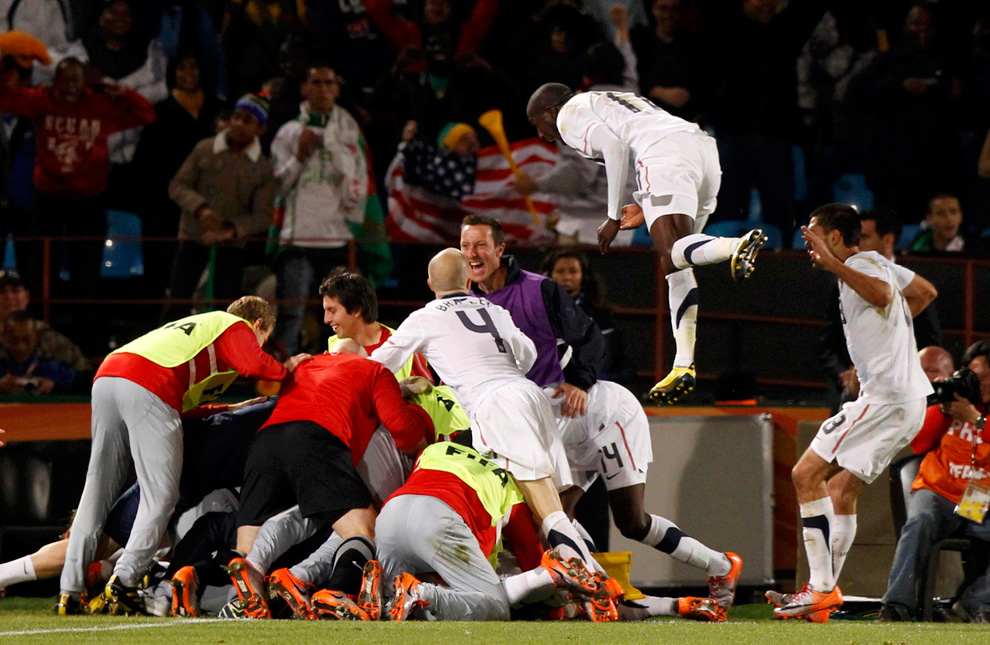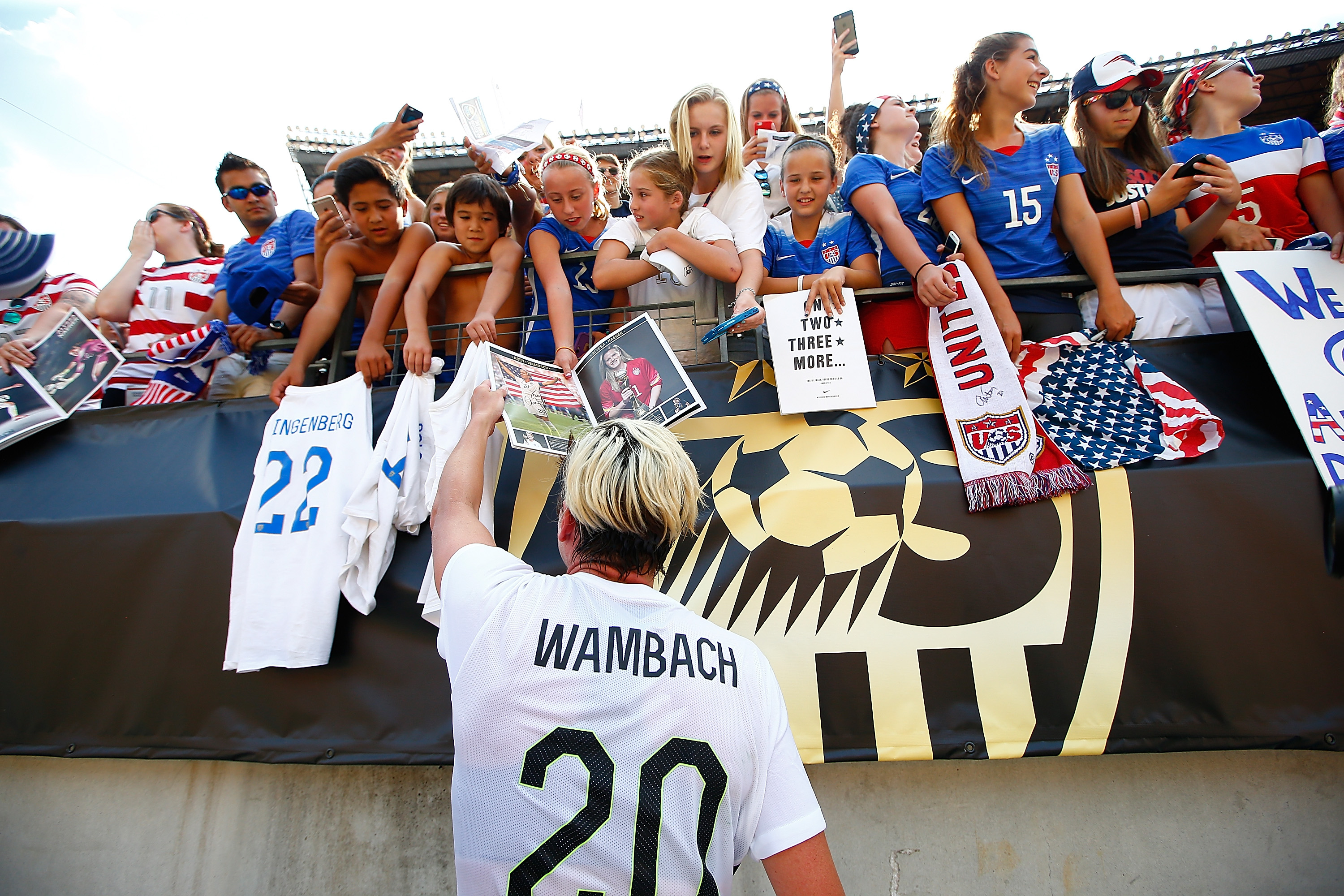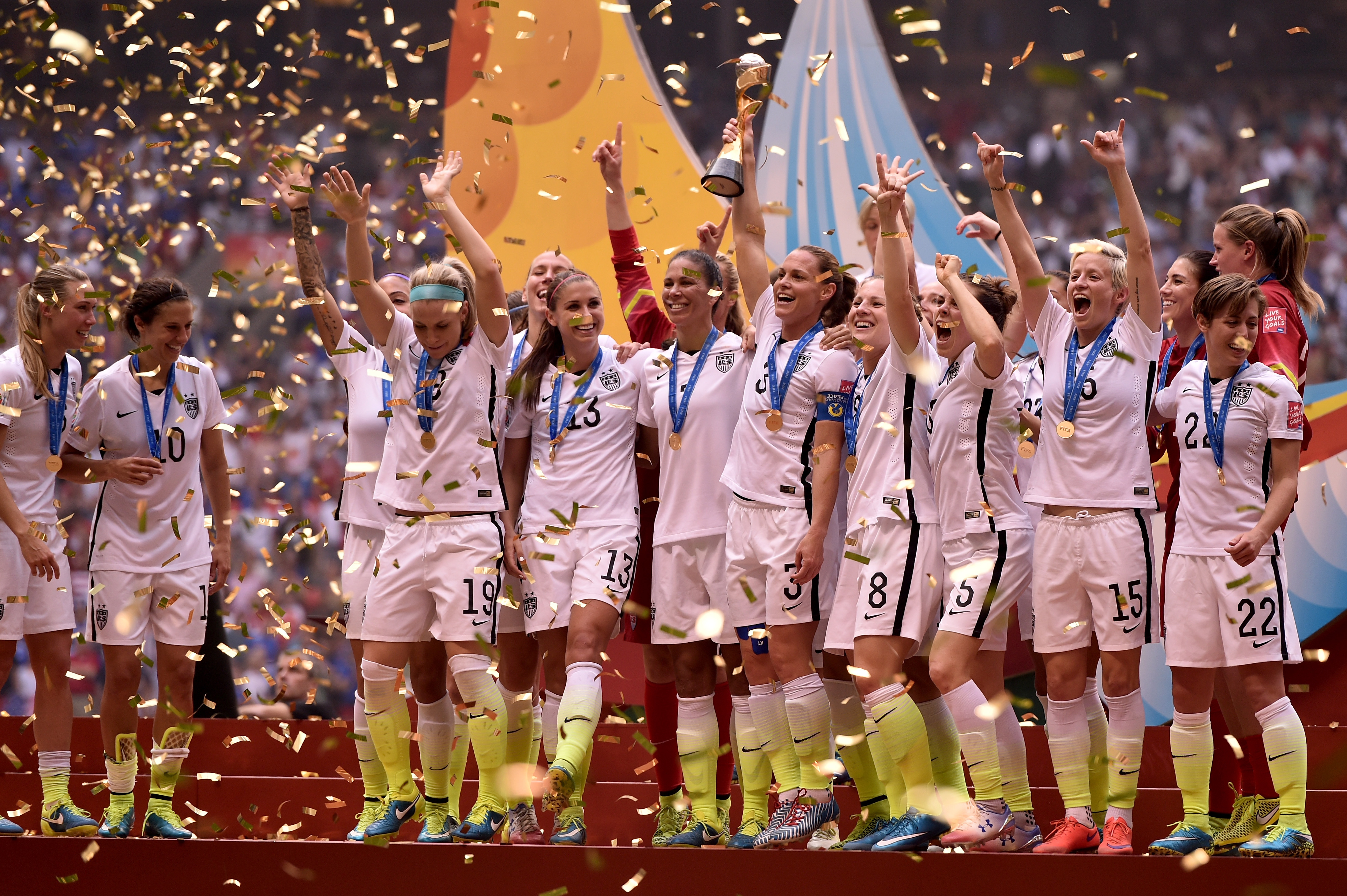Opportunity usually only knocks once, and as we’re finally winding down on the United States women’s national team “Victory Tour” it is hard not to believe U.S. Soccer has lost a golden opportunity or 10 to make a real statement for the women’s game.
Let’s start with the format of it all to begin with — 10 games. Who thought that would be a wise choice?
Instead, it became a grueling five-month marathon that became afterthought instead of something special to tune in to. Not even the possibility of a final glimpse of the greatest goal scorer in USWNT history, Abby Wambach, could stand up to five months and 10 games worth of action.
Talk about failing to capitalize on a good thing.
After hoisting the title trophy at the 2015 Women’s World Cup in Canada this past summer, the USWNT was the talk of not just the soccer community in the United States, but around water coolers at work and all over sports talk radio.
TV ratings were insane, players were becoming household names and the NWSL saw massive attendance increases following the World Cup’s finish. But, U.S. Soccer needed to capitalize on all of it, and its idea was a marathon stretch of 10 games it called a “Victory Tour” across the United States.
Let’s just say that strategy has backfired in a major way.
In reality, said “Victory Tour” has become more of a long, drawn out and played out goodbye to the great Abby Wambach more than a celebration of one of the biggest things to ever happen to the women’s game.
It also has become a black eye for both U.S. Soccer and expected growth of the game in the process.
The United States Soccer Federation not only missed the boat with a five-month marathon end to the 2015 calendar year, it also missed a golden opportunity to take the women’s game to a whole different level.
Sure it was nice to throw a bone to the likes of CONCACAF foes like Costa Rica and Trinidad & Tobago, but the games lacked the specialness that needs to happen to draw fans to the games. Instead, exotic locales and “new” areas of targeted growth became a focus of these games.
Nowhere in the planning was finding a way to piggy back with the NWSL and really highlight the professionalism of the game in the United States. Only one game, in Seattle, was played in an NWSL location.
It has resulted in lower and lower attendance as time has gone on, culminating in just a reported 10,000 fans ready to attend the game in Hawaii this past weekend and a paltry crowd around the same size showing up for the game in San Antonio on Thursday.
There is also the fact that the USSF has failed to make a stand for equality in playing conditions for its men’s and women’s programs following the controversy of artificial turf fields at the Women’s World Cup just this past summer.
When the Victory Tour was announced, the first four games were all played in disappointing locations if for no other reason than three of the four venues featured artificial turf fields that were not going to be made to become natural grass on top of it.
Only the opener at Heinz Field in Pittsburgh featured a natural grass surface. Since that opening announcement, things didn’t get better in terms of playing conditions, as five of the final six contests were going to be played on artificial turf fields. Only a December 13th matchup with China at University of Phoenix Stadium in Glendale, Ariz. will feature the natural grass that makes the beautiful game so much more beautiful.
Things really got ugly in the most beautiful of locations this past weekend, as the players arrived in Hawaii to an artificial playing surface that caused a torn ACL for star Megan Rapinone in a non-contact variety. Seams were showing badly and players were in huge danger, forcing the USSF to cancel to contest.
It was later revealed that the USSF failed to even send anyone to inspect the field the requisite months in advance. Again, like it does for every single men’s national team contest (friendly or not).
A trip to the Alamodome in San Antonio, Texas on Thursday night didn’t help the image of the USSF much either. Instead, we were treated to bad artificial turf replete with the old-school football lines all over it. There was even the wonderful rug burn turned bloody mess for USWNT star Tobin Heath.
"Rug burn" is something I wish I didn't have to hear @JulieFoudy say when calling a #USWNT match. (or any soccer game for that matter)
— Carie Small (@CarieIsSoVery) December 11, 2015
My god. That is a gross rug burn. If only soccer could be played on grass or something…
— Neil Rosan (@neilandsports) December 11, 2015
That’s not to mention the god awful officiating that saw a magical and from-thin air penalty kick awarded to the USWNT for the 1-0 lead in the first half. Or missing a mid-air collision that saw Trinidad & Tobago’s keeper literally karate kicked square in the chest.
What should have been a joyous celebration of a great World Cup run has turned sour real quick. Unfortunately, and for those of us around long enough, all too easy to call, the USSF has failed to capitalize and elevate off what was the most successful summer of women’s soccer ever in the United States.






